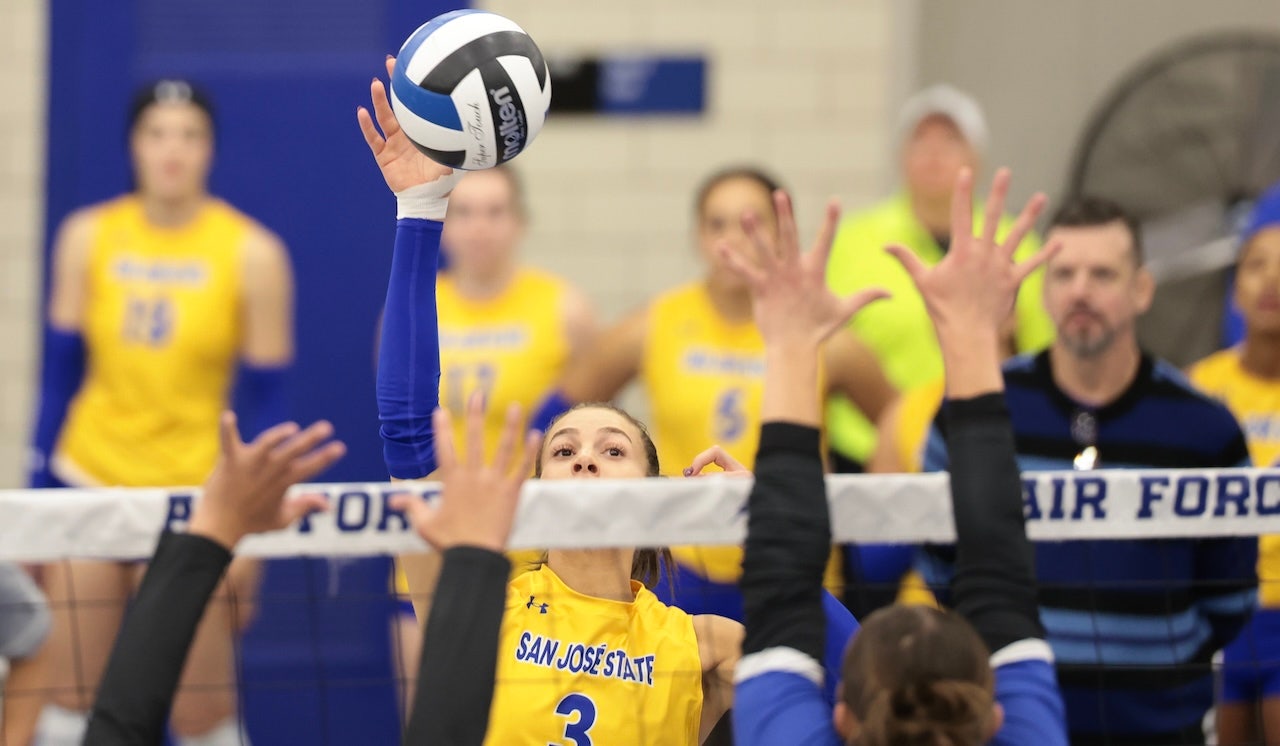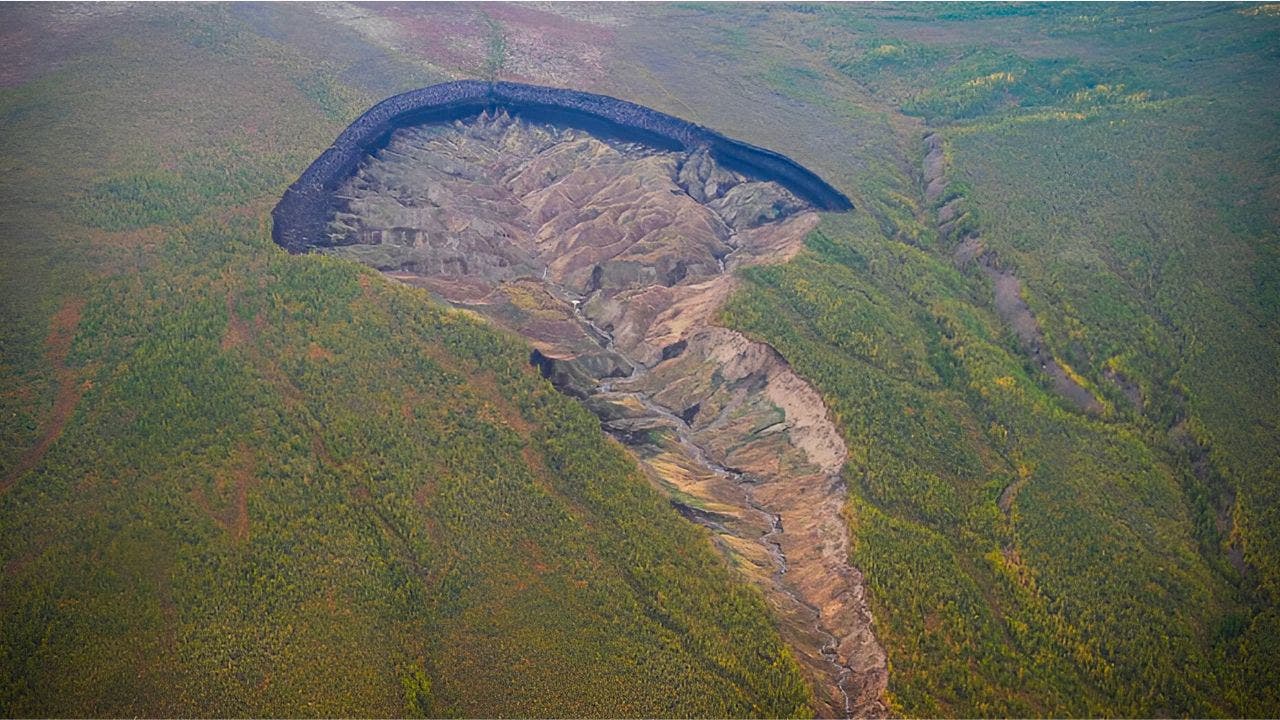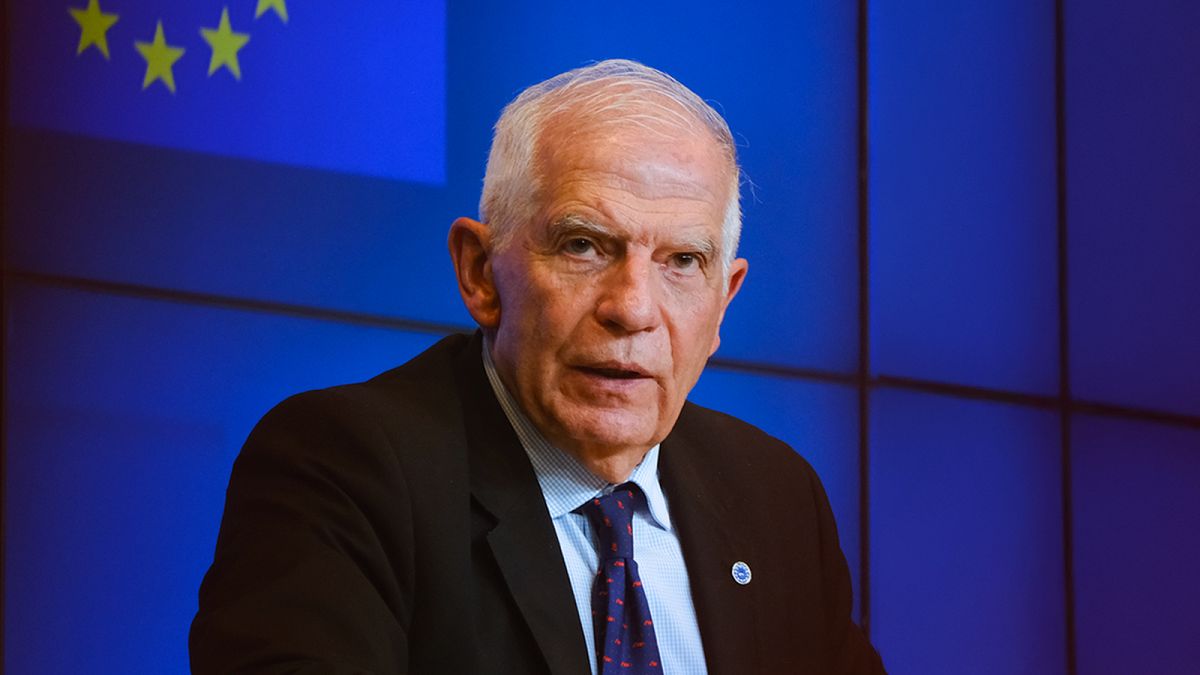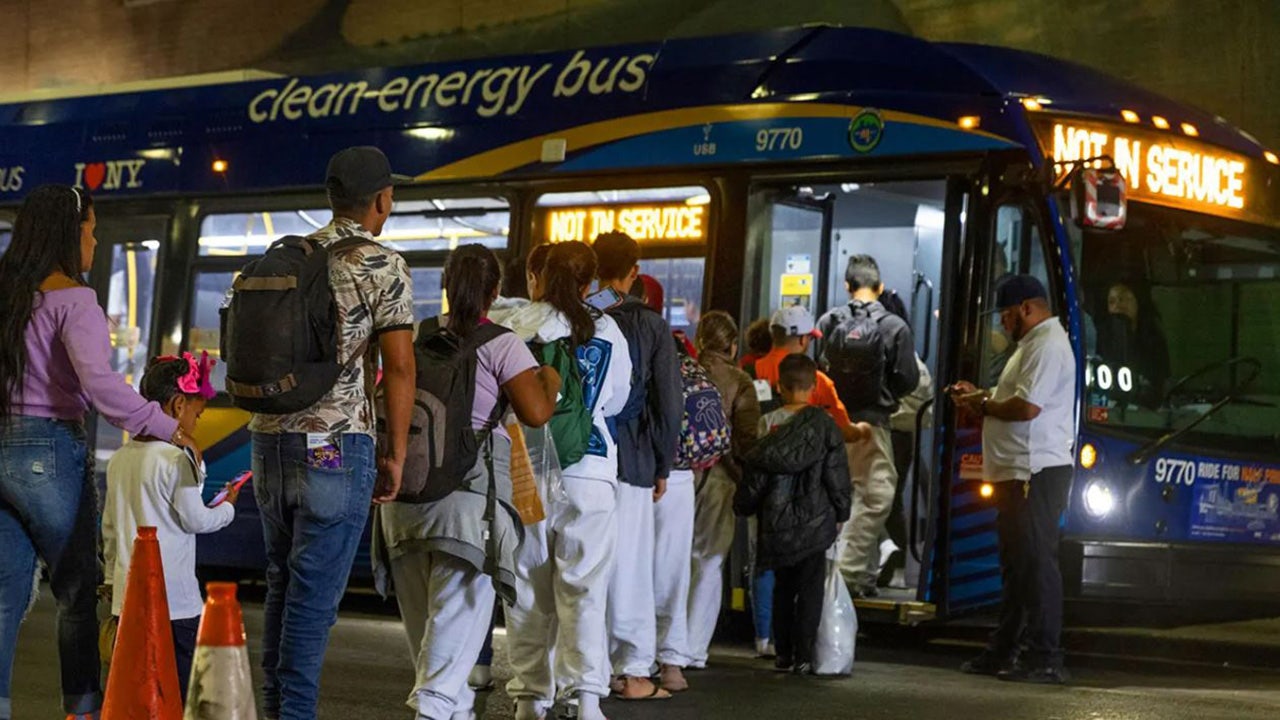Virginia
As Youngkin Tries to Pull Virginia Out of RGGI, Experts Warn of Looming Consequences for Low-Income Residents and Threatened Communities – Inside Climate News

After a tight vote by the state’s Air Pollution Control Board, Virginia has moved one step closer to exiting the Regional Greenhouse Gas Initiative and fulfilling an executive order issued by Gov. Glenn Youngkin the day he took office.
In theory, the board’s 4-3 vote on June 7 to repeal Virginia’s participation in the initiative, known as RGGI, opens the way for Youngkin, a Republican, to finalize a withdrawal by the end of this year. But legal challenges from environmentalists and others appear likely: Many argue that a board reporting to the governor cannot reverse a binding 2020 decision by the state General Assembly to enlist Virginia in the program.
RGGI (pronounced reggie) is a cooperative agreement in which 11 Eastern states take part in a market mechanism to reduce greenhouse gas emissions and arrest climate change. Under the accord, fossil-fuel-powered electricity generators with a capacity greater than or equal to 25 megawatts must purchase “allowances” commensurate with the emissions from their plants, giving the utilities an incentive to decrease those emissions over time. An overall limit, or cap, on the states’ emissions is reduced year by year as the allowances are traded within the market.
When state lawmakers brought Virginia into RGGI in 2020 under the Clean Energy and Community Flood Preparedness Act, they added two major provisions: 50 percent of the money had to be spent on energy efficiency programs in low-income communities, and another 45 percent had to go toward helping communities adversely affected by sea-level rise and flooding.
So far, the initiative has generated over $650 million for the state, helping strapped Virginians make upgrades to their homes and allowing communities to gird their defenses against rising seas and flooding.
Home weatherization experts, environmentalists and legal analysts say that a cutoff in funds could reverse progress across the Commonwealth.
“It’s just a disaster of a decision,” said Nate Benforado, a senior attorney with the Southern Environmental Law Center.
Youngkin tasked the Air Pollution Control Board with reviewing Virginia’s participation in RGGI in 2022. A public comment period followed. When the board convened for a final vote on June 7, the air quality index in parts of Richmond was at an “unhealthy” level due to smoke from the Canadian wildfires traveling down the East Coast.
“We have tools to address the downstream results that we’re seeing” from climate change, said Benforado. “RGGI is one of those tools,” he continued. “It is a proven solution.”
In Three Years, a 16.8 Percent Drop in Emissions
Since Virginia adopted RGGI in 2020, the state’s power plant emissions have dropped by 16.8 percent, according to data from the Environmental Protection Agency. Under Youngkin, Virginia’s Department of Environmental Quality disputes that these emissions reductions can be attributed to RGGI.
But there is no question that millions of dollars in RGGI allowances paid by the state’s two largest utility providers, Dominion and Appalachian Power, have been channeled to infrastructure projects in low-income areas across Virginia. To date, $295.6 million has gone to sea-level mitigation and flood protection programs, and $328.5 million to low-income energy efficiency projects.
One of those projects is the Weatherization Deferral Repair Program, which funds, among other programs, home repairs for low-income households so they can qualify for federal funds to increase the energy efficiency of their houses or apartment units. Those who qualify for the deferral program get the repairs they need paid for by RGGI.
Chase Counts, senior director of operations with Community Housing Partners Energy Solutions, a nonprofit that provides weatherization and energy efficiency services across Virginia, estimates that as recently as 2020, one in five of the homes his organization surveyed were eligible for federal assistance but could not receive funding because of structural issues.
Once Virginia joined RGGI, “we have been able to serve just over 500 households that we wouldn’t have otherwise been able to,” Counts said.
He recalled how one client, Kris Van Zandt, a Walmart employee living in the north central town of Gordonsville, needed his entire roof replaced so his house would qualify for a solar panel incentive program offered by his utility provider, Dominion. Community Housing Partners Energy Solutions replaced his roof with money from the Weatherization Deferral Repair Program, at no cost to Van Zandt.
“I was almost in disbelief that they were even doing this,” said Van Zandt, who said he would have needed to take out decades’ worth of loans to finance the project on his own. Since installing the solar panels and making other energy efficiency improvements, Van Zandt estimates that he has been able to save $50 to $70 dollars a month on his utility bill, depending on the season. “I hope this program can get out to more people,” he said.
A study commissioned by the Nature Conservancy and published in January by Virginia Commonwealth University estimated that if Virginia remained in RGGI through 2030, up to 131,000 low-income households across the state could receive energy efficiency upgrades, saving homeowners and renters an average of $540 a year on their utility bills and as much as $676 annually by 2030.
Without funding from RGGI, “we would go back to 2020, where we’re deferring one in five households” seeking upgrades, Counts said.
Lena Lewis, an energy and climate policy manager at the Virginia chapter of the Nature Conservancy, said that, for now, many low-income households in the Commonwealth cannot afford the upfront costs of making their homes more energy-efficient. They are “stuck in this cycle of paying too much for their energy,” Lewis said.
“You need something to disrupt that cycle, and that’s what the RGGI funds can do.”
In pushing for Virginia’s withdrawal from RGGI, the Youngkin administration has pointed out that monthly Dominion bills in Virginia have increased by an average of $2.39 since the state joined the initiative—evidence, it says, of the program’s detrimental impact on consumers.
Benforado countered that it was Virginia’s General Assembly, not RGGI, that authorized Dominion and Appalachian power to pass those costs on to consumers. The Youngkin administration is “certainly right to question those decisions, but if you want to change it, you go to the General Assembly and convince them to change the law,” he said.
Benforado also said that the fluctuating price of fossil fuels has played a greater role in Dominion’s rate increases than RGGI’s requirements have.
Youngkin’s office did not respond to a request for comment on the June 7 vote or its implications.
Before RGGI, ‘You Basically Sat There’
On the other front, sea-level-rise mitigation and interior flooding projects, RGGI has paid out just under $300 million since 2021, an unparalleled source of continuous funding, according to Skip Stiles, the executive director of the nonprofit organization Wetlands Watch. The money has gone toward communities dealing with encroaching waters along the state’s shoreline and flood prevention infrastructure in Virginia’s central and western regions, home to many rural and low-income residents.
Stiles, whose group counsels communities and local governments on the tools at their disposal to conserve wetlands and deal with rising seas and flooding from other events, estimates it will take tens of billions of dollars in funding to adequately prepare for the water-related effects of climate change in Virginia.
Before RGGI, if someone wanted to embark on a project to combat sea-level rise along Virginia’s coast, “you basically sat there with your plans, waited for a disaster to hit, and then got disaster funding to build your project” from the federal government, Stiles said.
Since Virginia entered RGGI, coastal communities have received funding to build critical infrastructure. Norfolk, for instance, has received more than $26 million since 2021 for projects including a risk management analysis, shoreline stabilization, and flood protection barrier systems. “It’s really made a change along the coast,” Stiles said.
Inland, where flooding from increasingly severe storms is an equal worry, RGGI income is just as essential, proponents say: Stiles estimated that communities in central and western Virginia are a decade behind the economically prized coastal areas in planning for natural disasters. “You get inland, and they don’t even have plans” for flood control projects, he said.
For now, much of the RGGI money spent in rural areas is being used to study the effects of flooding on those inland communities. Tangible projects like moving houses away from rivers, raising roads and installing river barriers “will come along later,” Stiles predicted, provided that Virginia maintains its RGGI membership.
Without money from RGGI, “we go backwards about 10 years,” he said.
Keep Environmental Journalism Alive
ICN provides award-winning climate coverage free of charge and advertising. We rely on donations from readers like you to keep going.
Donate Now
The Youngkin administration also cites its own proposed funding increase for the state’s revolving loan program, “a suite of federal programs” and Virginia’s Clean Economy Act—signed into law in 2020 under Youngkin’s Democratic predecessor, Ralph Northam—as viable funding alternatives to RGGI. The Clean Economy Act requires Dominion Energy and Appalachian Energy rely wholly on renewable energy sources by 2045 and 2050, respectively. If either company fails to meet its renewable targets, they must make a “deficiency payment,” part of which gets used to fund job training and renewable energy programs in “disadvantaged communities.”
The law does not specify the size or timing of those payments, and either company could choose to purchase renewable energy certificates instead.
Counts acknowledged that other means of funding are available for some of the kinds of work that RGGI subsidizes but contends that they cannot match the size of RGGI’s coffers. For example, he said, Virginia had access to $270,000 for weatherization repairs from the federal Weatherization Readiness Fund last year, whereas the Weatherization Deferral Repair Program gets $15 million annually from RGGI.
“You could point to other programs as being available, but it’s just apples and oranges at that scale,” Counts said.
A Route With ‘Fish as Roadkill’
Stiles doesn’t see the Youngkin administration’s proposed increase in funding to the state revolving loan program, which was established last year by the General Assembly and will require recipients to pay back any money they receive for “projects for resilience purposes,” as a fully viable alternative to RGGI, either.
“You can’t raise roads with this money,” Stiles said. “And we have a route down here where you get fish as roadkill.” He was referring to flooding along roads in Norfolk and other coastal areas in Virginia.
Lower-income Virginians, he pointed out, are less likely to possess the equity necessary to qualify for a loan, and money distributed in a state-run revolving loan program is more likely to get moved to politically expedient projects. “It’s not really a solution,” Stiles said.
The Clean Economy Act, approved, like RGGI, in 2020 by the Virginia General Assembly, wouldn’t be enough to rein in the state’s power-sector emissions without RGGI working alongside it, said Benforado of the Southern Environmental Law Center. He noted that about 30 percent of Virginia’s power sector emissions come from producers other than Dominion and Appalachian Power.
To keep independent producers’ emissions down, “RGGI is all we’ve got,” he said.
Virginia has until Dec. 31, when its initial contract agreement with RGGI expires, to officially exit RGGI. Nonetheless, the statute that brought Virginia into RGGI “was not discretionary,” Benforado said. “The law says, very clearly, Virginia is required to participate in a market-based trading program.”
The same day Virginia’s Air Pollution Control Board held its vote, RGGI released an updated tally of its proceeds: During the most recent round of auctions, Virginia raised over $67 million from caps on fossil fuel emissions. With that new money on the books, Virginia had officially brought in over half a billion dollars by participating in the market-based initiative.
Stiles highlighted the paradox of the Air Pollution Control Board’s vote coinciding with the latest cash influx from RGGI.
“I’m looking at those numbers—a half a billion dollars to reduce energy use for low-income folks and to fix flood projects,” he said. “Where were we going to get that money if it weren’t for RGGI?”

Virginia
How to Watch & Listen to West Virginia vs. No. 24 Arizona

The West Virginia Mountaineers (4-2) will meet the No. 24 Arizona Wildcats in the third place game of the Battle 4 Atlantis midseason tournament for the sixth meeting between the two programs.
West Virginia vs. Arizona Series History
Arizona leads 2-3
Last Meeting: March 28, 2008 (NCAA Tournament) WVU 75-65
When: Friday, November 29
Location: Paradise Island, Bahamas, Imperial Arena (3,900)
Tip-off: 3:00 p.m. EST
Stream: ESPN2
Announcers: Beth Mowins and Debbie Antonelli
Radio: Tony Caridi (PBP), Brad Howe (analyst) Mountaineer Sports Network from Learfield IMG College(Radio affiliates)
WVU Game Notes
– West Virginia was scheduled to play in the 2020 Battle 4 Atlantis. The tournament was moved to Sioux Falls, S.D., due to COVID, and the Mountaineers won the renamed Bad Boy Mowers Crossover Classic.
– WVU is 45-16 in in-season tournaments since 2007.
– With a win over No. 3 Gonzaga, WVU defeated a Top 5 AP team for the second consecutive season. Last season, the Mountaineers downed No. 3 Kansas in Morgantown, 91-85.
– Prior to the overtime win over No. 3 Gonzaga, WVU had lost six straight overtime games.
– This is WVU’s fourth trip outside the United States and Puerto Rico to play a regular season game. WVU played in Cancun in 2013 and 2019 and opened the season in Germany in the 2017 Armed Forces Classic.
– West Virginia is the only team in the country that has two players on the same team who averaged more than 20 points per game from last season — Tucker DeVries (21.6 ppg) and Jayden Stone (20.8 ppg)
– West Virginia is 201-55 against nonconference teams in regular season games in the last 21 seasons.
– The Mountaineers have posted a winning nonconference record in 31 of the last 32 seasons.
– WVU is 265-99 in its last 362 games against unranked teams, including winners of 148 of its last 180 at the WVU Coliseum.
– This is the 116th season and 122nd year overall for WVU basketball, which began in 1903.
– Darian DeVries, who led Drake to six consecutive 20-win seasons and has a career .731 winning percentage as a head coach, was named the 23rd head men’s basketball coach at West Virginia University on March 24, 2024.
– DeVries has a record of 154-57 (.731) in seven seasons as a head coach, including a 59-16 (.787) mark in the last two-plus seasons.
– This past August, the men’s basketball team went to Italy for a 10-day tour and won all three of its games against international competition.
– West Virginia returns just 2.8 percent of its scoring from last season’s team (Ofri Naveh).
– The Mountaineers are led by a pair of transfers in Tucker DeVries (Drake) and Javon Small (Oklahoma State). Last season, DeVries was named an Associated Press All-American Honorable Mention selection, while Small earned All-Big 12 Honorable Mention honors.
– In addition, Eduardo Andre (Fresno State), Joseph Yesufu (Washington State), Sencire Harris (Illinois), Amani Hansberry (Illinois) and Jayden Stone (Detroit Mercy) will all see considerable action this season.
– Tucker DeVries was named to the 20-member Julius Erving Preseason Watch List, giving annually to the nation’s top small forward.
– Tucker DeVries was named to the preseason Naismith Trophy Men’s College Player of the Year Watch List.
– Tucker DeVries was named to the John R. Wooden Award Top 50 Preseason Watch List.
Virginia
NBA Draft: West Virginia Duo Produce Big Numbers in Upset Over No. 3 Gonzaga

West Virginia got off to a hot start at the Bad Boy Mowers Battle 4 Atlantis by knocking off undefeated Gonzaga 86-78 in overtime in their first-round matchup. The Mountaineers have received strong performances to begin the season from two upperclassman transfers: Javon Small and Tucker DeVries.
With each player delivering standout performances, it’s time to start considering them seriously as draft prospects.
Let’s take a closer look at their outings in this big win and dive into their seasons as a whole up to this point.
Tucker DeVries finished this game with a stuffed stat line of 16 points, six rebounds, four assists, two steals and four blocks. This level of versatility clearly illustrates the type of player he is, as he looked solid in nearly every aspect of the game. He has good positional size at 6-foot-7 and plays with a very high IQ on both ends of the floor. His defensive impact was especially noticeable, as he consistently made impactful plays, including a steal that led to free throws to tie the game at the end of regulation. DeVries finished the second half on a 5-0 run, which gave West Virginia momentum to capture the game in overtime.
DeVries has had a solid all-around season leading up to this performance, averaging 13.5 points, 4.8 rebounds, two assists, 2.5 steals and 1.3 blocks, with shooting splits of 36.6%/40.7%/81.3%. If he were to be drafted following this season, it would likely be in the second round, but his versatile play style is very promising.
Javon Small led the Mountaineers in scoring during this upset victory, contributing 31 points on impressive shooting splits of 50%/40%/81.8%. In addition to his scoring, he also grabbed seven rebounds, dished out two assists and added one steal and one block. Small is a quick and slippery guard who stayed in attack mode throughout the game, translating well into fast-break opportunities. Rarely staying in one spot on offense, Small kept the floor spaced and forced his defender to fight through traffic to keep up with him. His offensive approach was patient as he waited for his defender to get off balance before attacking.
Before this game, Small had averaged 15.5 points, 3.3 rebounds, four assists and three steals. He leads the Mountaineers in points, assists, and steals, while providing a noticeable spark on a nightly basis. Small is now at his third school in four years, with similar statistics in each of his previous two seasons. As an older guard, it is not guaranteed that he will be drafted, but if this level of productivity continues throughout the season, he may receive an opportunity to prove himself at the next level.
Want to join the discussion? Like Draft Digest on Facebook and follow us on Twitter to stay up to date on all the latest NBA Draft news. You can also meet the team behind the coverage.
Virginia
Virginia Tech Football: Three Keys to Victory for the Hokies on Saturday vs Virginia
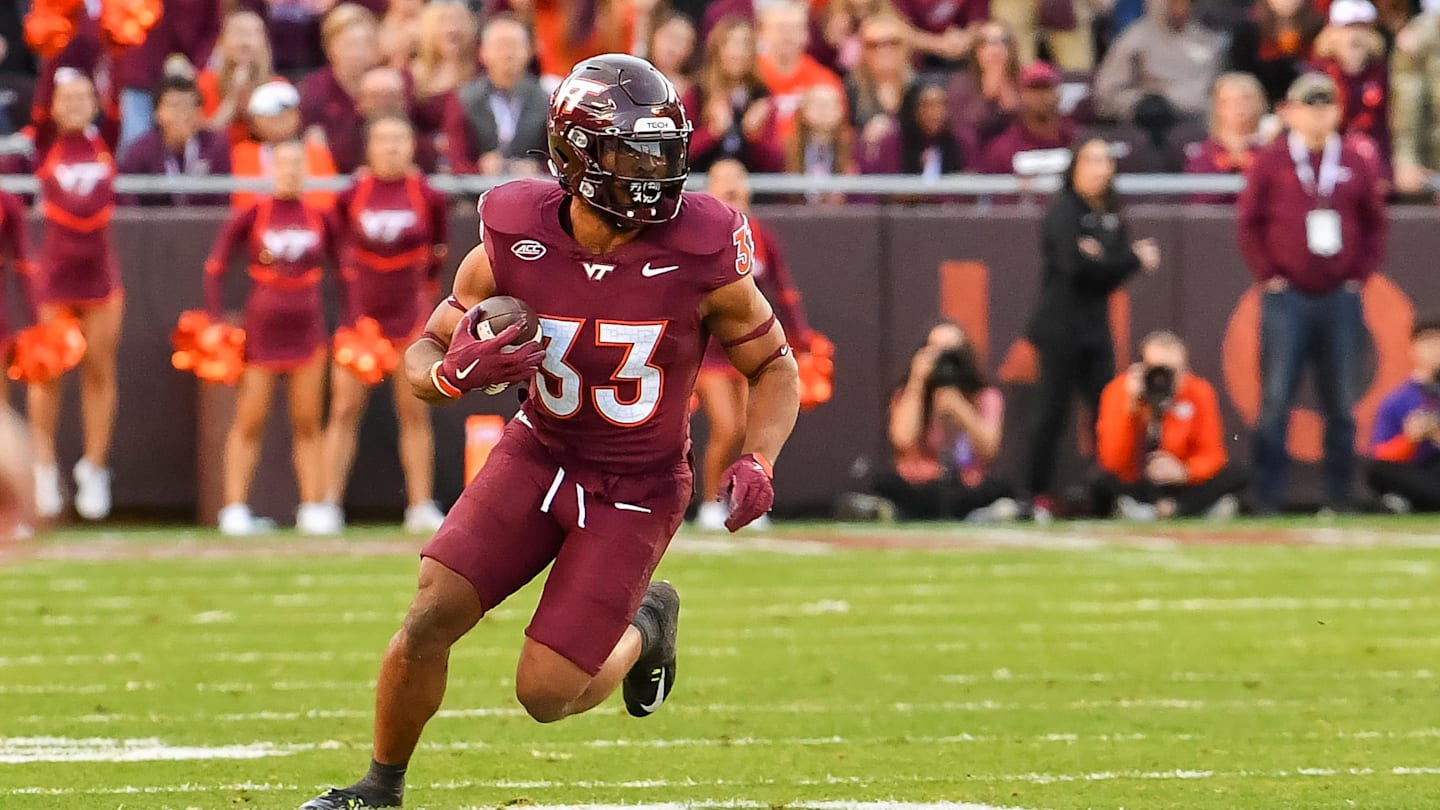
The rivalry matchup between Virginia Tech and Virginia is nearly 48 hours away and it is a big matchup for both teams. The Hokies and the Cavaliers are both 5-6 and needing a win to make a bowl game. The loser will be getting a headstart on 2025 instead of playing in the postseason.
At the start of the year, Virginia Tech was being talked about as one of the biggest surprise teams not just in the ACC, but in the country. This team’s biggest goals have gone away, but they still have an opportunity to reach a bowl game for the second straight season. That should still be a big deal to the program, but on the other side, the Cavaliers are trying to make a bowl game for the first time under Tony Elliott. They are going to be fired up about playing in this game and having a chance to make a bowl game, so Virginia Tech can’t take it for granted, no matter their past success vs Virginia.
So what are the keys to a win for Virginia Tech on Saturday?
Before you could even blink on Saturday night, Virginia Tech was trailing Duke 14-0 thanks to two long touchdown plays and the Blue Devils have not been a very explosive offense this season. Virginia has found a way to put points on teams like Clemson and Louisville this season and has improved since last year. The Hokies’ pass rush was non-existent on Saturday vs Duke, finishing with no sacks and being unable to disrupt Duke quarterback Maalik Murphy. They will have to be able to play better on Saturday if they want to avoid the upset.
It is still up in the air who is going to play quarterback for the Hokies on Saturday night, but whoever it is would benefit from a big game from one of the nation’s best running backs. Tuten had 84 yards on 19 carries last week, but Virginia Tech might need more than that on Saturday when the face the Cavaliers.
Our own RJ Schafer wrote this about the quarterbavck situation heading into Saturday’s game:
“Brent Pry listed both Kyron Drones and Collin Schlee as questionable ahead of the historic matchup. He added that both will practice, although very limited, and they could “just be watching” from the sidelines.
Coach Pry also added that Virginia Tech is preparing four quarterbacks to be ready to play this weekend, including Davi Belfort, a freshman quarterback from Brazil, a country which could begin to be the future of American college football.
Whoever plays this weekend is going to have to have to manage the game and not turn the ball over. I think the offense is going rely on the run game heavily this weekend due to that.
Additional Links:
Virginia Tech Football Releases Depth Chart Ahead of Matchup Against Virginia
Virginia Tech Football: PFF Grades and Snap Counts For Every Player in Saturday’s Loss to Duke
Virginia Tech Football: Updated Bowl Projections For The Hokies Heading Into Final Game
-

 Science1 week ago
Science1 week agoTrump nominates Dr. Oz to head Medicare and Medicaid and help take on 'illness industrial complex'
-

 Health6 days ago
Health6 days agoHoliday gatherings can lead to stress eating: Try these 5 tips to control it
-

 Health4 days ago
Health4 days agoCheekyMD Offers Needle-Free GLP-1s | Woman's World
-

 Science3 days ago
Science3 days agoDespite warnings from bird flu experts, it's business as usual in California dairy country
-

 Technology2 days ago
Technology2 days agoLost access? Here’s how to reclaim your Facebook account
-

 Science1 week ago
Science1 week agoAlameda County child believed to be latest case of bird flu; source unknown
-

 Sports1 week ago
Sports1 week agoBehind Comcast's big TV deal: a bleak picture for once mighty cable industry
-

 Entertainment1 day ago
Entertainment1 day agoReview: A tense household becomes a metaphor for Iran's divisions in 'The Seed of the Sacred Fig'

